Leeks
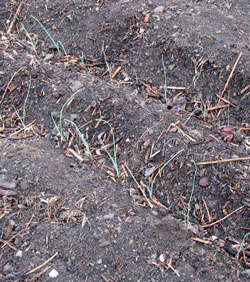 ©Janet Allen
©Janet Allen Leeks planted in a trench
After starting leeks indoors in a pot, we separate them, and then plant the young plants in a trench.
As they grow, we fill in the trench. This is done to produce more white area of the leek.
A method that our son told us about and that we have used for the past couple of years is to let the leek seedlings get larger in the pots. Then when transplanting we use a dowel to make a hole in the prepared soil, trim the roots of each seedling, and drop it in the hole 3 to 4 inches deep, pushing soil around its base so that the rest of the hole fills in. This doesn't require digging a trench or filling in the trench as the leeks grow.
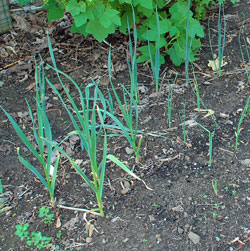 ©Janet Allen
©Janet Allen Young leek plants
Leeks are really easy to grow. Here are the young leek plants.
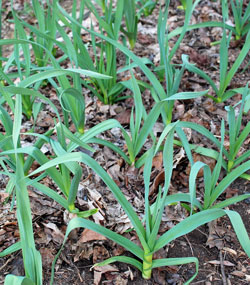 ©Janet Allen
©Janet Allen Leeks growing
They're getting bigger.
 ©Janet Allen
©Janet AllenThey still need to grow a bit.
We don't do much but wait as they get bigger.
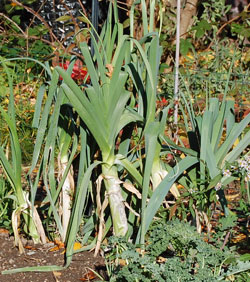 ©Janet Allen
©Janet Allen Mature leeks
Here they're ready for harvest. We cut off the root and top and remove some outer leaves so they're easier to clean
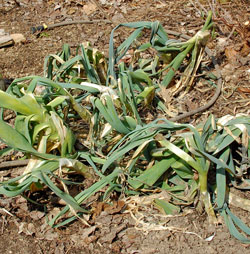 ©Janet Allen
©Janet Allen Leeks in spring after overwintering
The first year we neglected to harvest all the leeks in the fall, we saw pretty bedraggled looking plants in the spring.
Fortunately, we didn't just throw them on the compost because they were delicious sautéed as a vegetable. We have recently learned that the leeks will overwinter much better it they are covered with a foot of leaves or other mulch in the late fall.
Problems
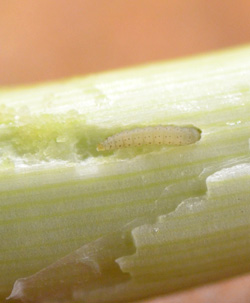 ©Janet Allen
©Janet Allen Infested by worms
We're rarely had problems with leeks, but after many problem-free years, this was a surprise. Many of the leeks had been infested with small worms — onion maggots. (The article in the sidebar suggests row covers in the spring to prevent the fly from laying eggs.)
Harvest record
| YR | LB | Notes |
| 15 | ||
| 14 | 8 | |
| 13 | 8 | Each year part of harvest is from current year, part from previous year |
| 12 | 8 | |
| 11 | 8 | |
| 10 | 1 | |
| 09 | 8 |
